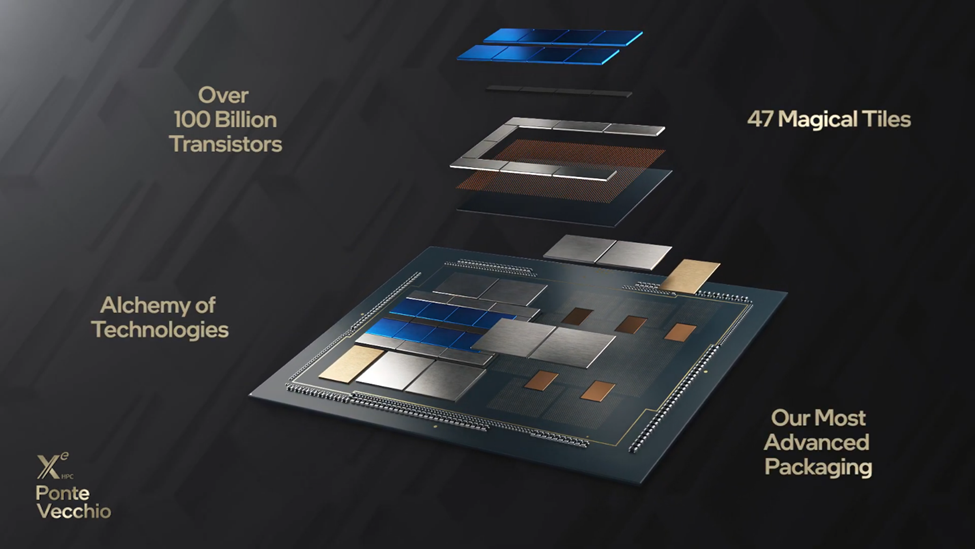Intel introduced Ponte Vecchio in late 2019 after over two years of development, providing detailed insights at ISSCC in February and Hot Chips in August of 2022. The chip showcased Xe design scalability and chiplet manufacturing. It was deployed in Argonne National Laboratory’s Aurora supercomputer with Sapphire Rapids processors. Aurora ranks second in the world at slightly over 1 EFLOPS. Despite ongoing installation, it has demonstrated 10.6 exaFLOPS in mixed-precision computing. Recently, Intel announced Ponte Vecchio’s sunsetting process, shifting focus to Gaudi 2/3 and Falcon Shores GPUs by 2025, aligning with market trends and strategic objectives.

What do we think? Intel made the supercomputer superchip GPU Ponte Vecchio. It took time, and Moore’s law and other architectural developments have been introduced, making the super powerful stand-alone GPU not the best AI solution going forward.
The SR-71 of computing will not be commercialized but will still serve
When Intel first released information on Ponte Vecchio to the public in late 2019, it had been in development for over two years. Then, during February 20–28, 2022, at ISSCC, and again in August 2022 at Hot Chips, the company gave more detailed information. The chip was in production at the time.
Ponte Vecchio was (is) an engineering marvel that demonstrated the scalability of the basic Xe design from an iGPU to an HPC accelerator, and the manufacturing accomplishment of chiplets. It was only deployed in one system, Argonne National Laboratory’s Aurora supercomputer (along with Intel’s next-generation Xeon Scalable Sapphire Rapids processor.). Aurora is the second-fastest supercomputer at slightly over 1 exaflops, just behind Frontier, which took the top spot at around 1.2 EFLOPS. However, the Aurora system is still being installed, and more performance can probably be squeezed out of the system. Argonne Lab says the Aurora wasn’t built just to run LINPACK benchmarks—it was built to balance scientific and AI computing. The system achieved 10.6 EFLOPS on mixed-precision computing on limited system benchmarking.
But last week, Intel informed partners of the beginning of the sunsetting process for Ponte Vecchio. Instead, the company appears to be prioritizing production capacity for Intel Gaudi 2/Intel Gaudi 3, while also gearing up for the release of its converged HPC and AI Falcon Shores GPU in 2025. This strategic shift follows Intel’s decision to skip Rialto Bridge in favor of Falcon Shores. While Intel’s reconfiguration of its accelerator road map may seem surprising, it aligns with the company’s long-term objectives and market dynamics.

I think of Ponte Vecchio as the SR-71 of computing. Limited production, technologically advanced, amazing speed, proof of concept… and it will be used for scientific investigation for many years.
Intel will maintain Ponte Vecchio availability in current clusters, but no new clusters will be deployed. Interested parties seeking Ponte Vecchio’s HPC capabilities can access them through the Intel Developer Cloud. However, the company has reiterated its focus on the upcoming Falcon Shores GPU, signaling a shift in priority towards the next-generation hardware.